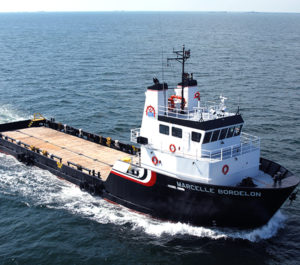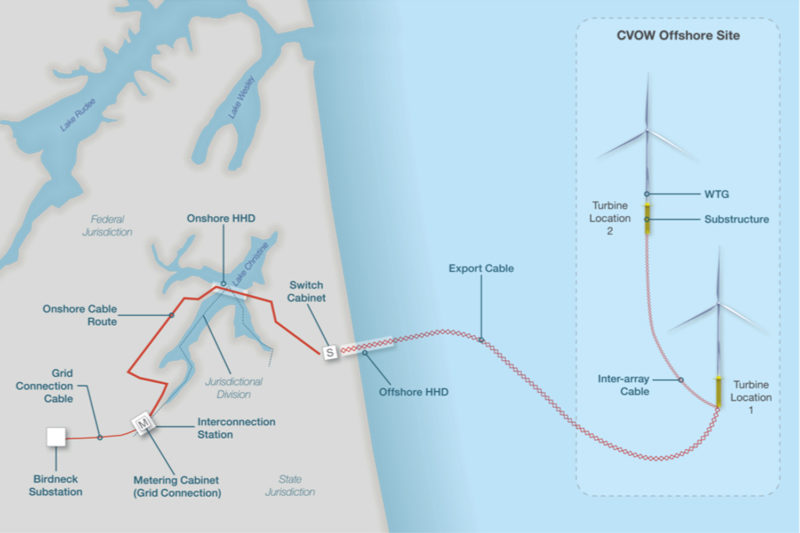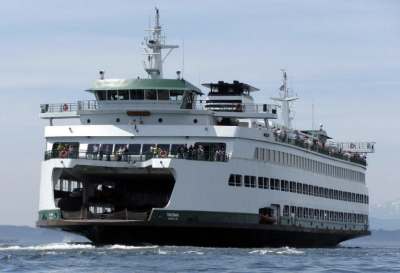A pair of Gulf of Mexico OSVs are at work off Virginia, conducting geophysical studies on a 112,800-acre federal lease where Dominion Energy and offshore wind developer Ørsted plan to build a 2,600-megawatt turbine array beginning in 2024.
Geospatial surveyors TerraSond contracted with Houma, La.-based Bordelon Marine to use the Sarah Bordelon and the Marcelle Bordelon, both 170’x36’x10’, 440.9 dwt, to start the work in mid-April in the lease area, 27 miles east of Virginia Beach.
“These surveys will provide the company with the geological, biological, and oceanographic data needed to support planning and construction in a manner that facilitates coexistence between the natural marine ecosystem and clean energy development,” Dominion Energy said in a statement issued April 27. “Ultimately, this data will support preparation of the project's Construction and Operations Plan to be submitted to the Bureau of Ocean Energy Management (BOEM) later this year.”

The Marcelle Bordelon is one of two OSVs carrying out a survey for the Coastal Virginia Offshore Wind project. Bordelon Marine photo.
The Bordelon vessels are carrying hull mounted and towed equipment to collect geophysical data. Additional equipment will be deployed this summer at specific locations to conduct seafloor sampling, the power company said.
"Safety is our top priority and while the coronavirus pandemic has created unique challenges, our teams have safely worked through them to keep the development of the commercial offshore wind project on track," said Mark D. Mitchell, Dominion Energy’s vice president of generation construction.
"At the same time, we are working diligently with our suppliers to develop a U.S.-based offshore wind supply chain anchored in Hampton Roads, which would establish Virginia as the leader in offshore wind in America."
The use of OSVs for the Virginia survey work is a notable milestone for the budding U.S. wind industry. With much Gulf of Mexico equipment underused or idled from the downturn in oil prices — long before the Covid-19 pandemic — leaders in the Gulf offshore services industry decided they should be doing more to get a foothold for East Coast wind power work using available assets.
Dominion Energy and Virginia port advocates are touting the Hampton Roads region as a prime staging center for offshore wind. Compared to other East Coast ports the region has more shoreside facilities with room to accommodate massive turbine components. Perhaps more critically, Virginia does not have limitations with vertical height clearance constraints of bridges and other infrastructure. Experts say that will be increasingly important as the wind industry seeks to achieve efficiency by using bigger turbines with more massive components moving by ship and barge.
Dominion Energy engaged Sea Risk Solutions LLC, a marine risk mitigation and liaison services provider, to bring in fishing liaison representatives, conduct “regional outreach meetings and in-person port visits to share project updates and listen to concerns from the region's fishermen,” according to Dominion. “Recent coronavirus restrictions on travel and in-person meetings have been accommodated by the electronic distribution of updated project materials.”
Dominion said it’s now engaging local fishing vessels based at Rudee Inlet in Virginia Beach to act as scout and safety boats to head off interactions between fisheries operations and the survey vessels.
The Bordelon boats are operating from Colonna’s Shipyard, Norfolk, Va., while tugs and barges from Virginia Beach-based Cape Henry Launch Service have carried equipment and materials to the pilot project site in preparation for the start of turbine installation this spring. Earlier this year, Crofton Industries, Portsmouth, Va., provided a vessel and diver to perform underwater work at the site.





